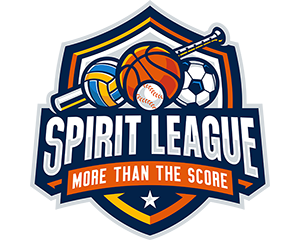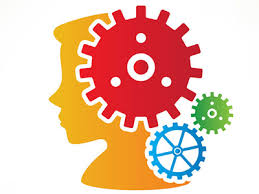By Dr. Claire Camaya
Yet another benefit of Spirit League…a connection to academics and executive functioning. Dr. Claire Camaya, Spirit League Board Member and Director of Doors Educational Center, sheds light on how children and teens with special needs benefit from physical activity more than we may think.
It is common knowledge that exercise is beneficial, it’s positive effects on physical and mental well-being widely studied. This is also the case for children with special needs, and it can be argued that, for them, exercise is even more important. Unfortunately, students with special needs are often excluded from accessing physical activity. Moreover, for many of these students, the vast majority of remedial time is often spent on addressing academic needs. While academic improvement is important, executive functioning skills which make academic achievement possible are arguably more important. One way to support these executive skills is through physical activity.
A 2018 study in the Journal of Science and Medicine in Sport cited 31 studies centered on the impact of physical activity on executive functions and academic performance in children. The findings from the studies included in this meta analysis were no different from countless others in singing the praises of exercise. Correlations were made specifically between acute physical activity (aerobic in nature) and improvements in executive skills. These skills include attention, focal maintenance, emotional regulation, inhibitory control, flexibility, memory, and set shifting. While students will not learn to read and write on the soccer field, physical activity provides them with a way to access and improve upon the underlying skills that will enable better learning in the classroom.
Many of the studies emphasized the importance of aerobic exercise, as well as that which is done frequently on a regular and long-term basis. These exercise regimens were linked to increased volume in the prefrontal cortex and medial temporal lobe, both of which are responsible for executive functions. In addition to reducing inflammation and insulin resistance; regular exercise promotes blood vessel growth, as well as the health and number of brain cells. Sports, in particular, provides a fun and engaging means to practice and improve these executive functions. Moreover, long-term engagement in non-competitive team sports allows for opportunities to work on verbal skills, social skills, and acquisition of new vocabulary concepts, particularly health and exercise-related vocabulary.
Unfortunately, children with special needs tend to participate much less in physical activity than their typical peers both in school and outside of school. While they often do have access to physical education, students with special needs are often excused from activity deemed too challenging for them. Granted, this seems reasonable given some of the physical challenges that accompany some special needs diagnoses. Still, their access to PE in school is largely dependent on their teachers’ perceptions of their physical abilities rather on reality. Many caregivers and educators are simply not aware of how to best provide access to their special needs students. Other barriers to physical activity both in and outside of school include the child’s lack of interest, behavior problems, appropriate physical activity programs, and parental lack of time.
The question becomes, how can families of children with special needs ensure accessibility?
- Seek out assistance from physical therapists, occupational therapists and others specializing in mobility.
- Look for non-competitive sports organizations or exercise-driven communities that support children with special needs. The key here is community. Look for organizations aligned with providing opportunities, support, understanding, and collaborative learning.
- Be consistent. Do your best to make sure your child attends often and regularly.
- Create a team approach to educating your family and your community on physical activity for the special needs community.
Sources:
Greeff, J.W., Bosker, R.J., Oosterlaan, J., Visscher, C., Hartman, E. (2018). Effects of physical activity on executive functions, attention and academic performance in preadolescent children: A meta-analysis. Journal of Science and Medicine in Sport, 21(5), pp. e501-507.
Godman, H. (April 5, 2018, 4:38 pm). Regular exercise changes the brain to improve memory, thinking skills.https://www.health.harvard.edu/blog/regular-exercise-changes-brain-improve-memory-thinking-skills-201404097110
Morley, D., Bailey, R., Tan, J., Cooke, B. (2005). Inclusive physical education: Teachers’ views of including pupils with special educational needs and/or disabilities in physical education. European Physical Education Review 11(1), pp. 84-107.
Sit, C. H. P., McMAnus, A., McKenzie, T. L., Lian, J. (2007). Physical activity levels of children in special schools. Preventive Medicine, 45(6), pp. 424-431
Yazdani, S., Yee, C.T., Chung, P.J. (2013). Factors predicting physical activity among children with special needs. Preventing Chronic Disease, 10(119).


